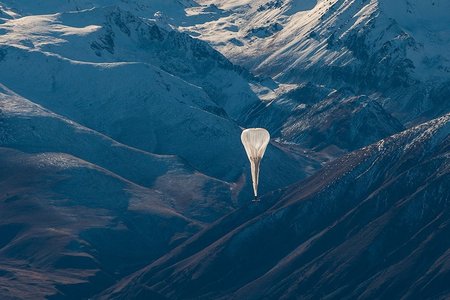Testing mechanisms of wave generation in the lower stratosphere using superpressure balloons
Particularly in the tropics where deep convection is strong, it can act as a source of atmospheric waves that transport momentum from the convection to other parts of the atmosphere. The convection and the waves may interact, as the waves act to amplify or suppress clouds and convection in neighboring regions. Often the waves are invisible, although in near saturated conditions the waves can produce alternating lines of clouds and clear sky, with clouds forming at the wave crests. These are visible to surface observers, and easy to detect by satellite. Higher in the atmosphere, where it is very dry, clouds do not form, and to study the waves scientists have to take a detour.

Laura Köhler and her co-authors compared high-resolution models to superpressure balloon observation to assess the ability of the models to simulate gravity waves. For this purpose, they use data collected over six years through a collaboration with a commercial project called “Loon”. The intention of Loon was to provide internet access to remote regions. Since discontinued the data were made available for research. Superpressure balloons drift on surfaces of constant density at altitudes between 16 and 21 km. They are displaced by gravity waves from their equilibrium level and thus capable of measuring these wave disturbances.
As deep convection is the main source of gravity waves in the tropics, the scientists studied the variance of the vertical wind as function of distance to the closest convection and compared the Loon observations to storm-resolving models from the DYAMOND winter initiative (DYnamics of the Atmospheric general circulation Modeled On Non-hydrostatic Domains). DYAMOND was designed to compare different global storm-resolving models. It provides 40 simulated days from mid-January to end of February 2020. In contrast to traditional climate models, the DYAMOND models explicitly resolve most of the important processes, making the various processes easier to diagnose and compare to observations.
For the models, the authors also calculated the gravity wave momentum flux and its variance. They found large differences between all models and the balloon observations. The mean flux differs up to a factor of two between the different models. For the variance of the vertical wind velocity, the authors even find differences of one order of magnitude between the balloon observations and the models. However, although the wave amplitudes differ a lot, the distributions of the vertical wind velocity as well as the decay behavior with distance to closest convection show similar qualitative characteristics.
These results are encouraging for future projects since they show the ability of the models to capture the basic physics of the waves and hence justify the use of simulated data as a basis for developing parameterizations. In a next step, the Cloud-Wave Coupling group at the Max Planck Institute for Meteorology plans to use storm-resolving model output for data-driven methods, i.e. using machine learning to parameterize gravity waves, within the project DataWave. This will support the possibility to better represent gravity waves in models and thus improve the global weather and climate prediction.
Original publication
Köhler, L., Green, B., & Stephan, C. C. (2023). Comparing Loon superpressure balloon observations of gravity waves in the tropics with global storm-resolving models. Journal of Geophysical Research: Atmospheres, 128, e2023JD038549. https://agupubs.onlinelibrary.wiley.com/doi/10.1029/2023JD038549
Contact
Dr. Laura Köhler
Max Planck Institute for Meteorology
laura.koehler@mpimet.mpg.de
